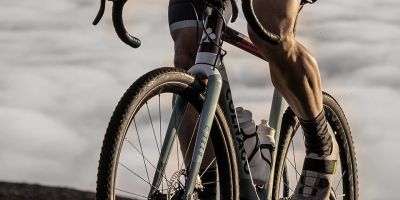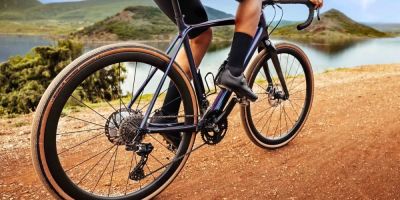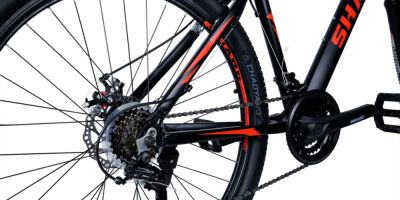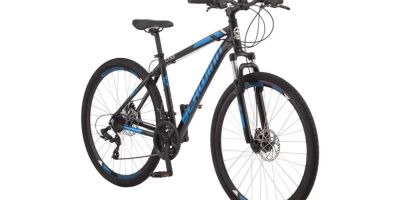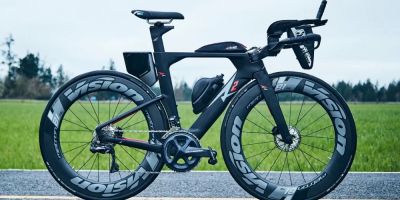How to Prepare Your Bike for a Race: A Step-by-Step Guide
1. Cleaning Your Bike
Before the race, one of the first things you should do is thoroughly clean your bike. A clean bike not only looks great, but it ensures that everything is functioning properly. I know from experience that a dirty chain or gears can result in unnecessary friction, which can slow you down during the race. Start by removing the wheels and cleaning the frame using a soft cloth and a gentle bike cleaner. Don't forget to check the areas around the bottom bracket, headset, and chainring for dirt accumulation.
Next, clean your wheels and rims with a brush and some water. Make sure to wipe off any mud or debris from the brake pads as well. A clean bike will allow your components to work smoothly, helping you achieve better performance on race day.

Conte's Bike Shop
3449 Wilson Blvd, Arlington, VA 22201, USA
2. Checking Your Bike’s Tire Pressure
Tire pressure is critical when it comes to race performance. Over-inflated or under-inflated tires can seriously affect your ride. Too much air can lead to a harsh ride with less grip, while too little air can increase the risk of flats and reduce efficiency.
To get the best results, check the manufacturer's recommended tire pressure, which can usually be found on the side of the tire. I’ve learned that having a good tire pressure gauge is essential. Inflate your tires according to the conditions of the race—if it’s a dry race, you can go slightly higher; if it’s rainy or muddy, you might want to go a little lower for better grip.

Bicycle Barn LLC
839 Reading Rd, East Earl, PA 17519, USA
3. Lubricating the Chain and Moving Parts
Your bike’s chain, derailleur, and cogs need to be properly lubricated before any race. If these components are dry or gritty, they will make pedaling inefficient and uncomfortable. I recommend using a bike-specific chain lube—don’t use oil or WD-40, as they attract dirt and grit.
Start by applying the lubricant to the inner links of the chain while rotating the pedals. After that, wipe off any excess with a rag. This will ensure the chain moves smoothly, and your bike won’t lose valuable speed due to friction.
4. Inspecting Your Brakes
Brakes are essential for safety, especially when racing. It’s vital to inspect them to ensure they’re functioning correctly. I’ve had times when I’ve started a race only to find my brakes were not engaging properly, leading to a frustrating experience.
Check your brake pads for wear and make sure they’re aligned with the rim. If they are worn down, replace them before race day. Test the brakes by squeezing the brake levers and making sure there’s no slippage or weird noises. You want to be sure that in a critical moment, you can rely on your brakes to stop you safely.
5. Inspecting the Gears and Shifters
Another important step in preparing your bike for a race is to check the gears and shifters. I’ve learned the hard way that a poorly shifting bike can ruin your entire race experience. The shifting should be smooth and precise, with no skipping or hesitation.
Make sure the derailleur is clean and that the cables are properly tensioned. If you notice any issues while shifting, make adjustments or take your bike to a mechanic for a professional tune-up. A well-tuned bike ensures you can shift gears smoothly throughout the race, which will allow you to focus on your performance.
6. Checking the Frame and Fork
The frame and fork are the backbone of your bike, and you want to ensure they are in perfect condition before heading into a race. Inspect the frame for cracks, dents, or any other signs of damage. You don’t want to start the race with a compromised frame.
If your bike has a carbon frame, pay extra attention to any small chips or cracks, as these can affect the strength and integrity of the bike. The fork should also be checked for any loose bolts or wear that could affect your ride’s stability. I always make sure my bike is as solid as possible before racing, as I don’t want anything to slow me down or cause issues mid-race.
7. Preparing Your Race-Day Gear
Aside from the bike itself, you also need to prepare your race-day gear. Make sure your helmet fits snugly and securely. I always double-check that my helmet straps are tight, as it’s essential for safety. Don’t forget your gloves, sunglasses, and cycling shoes—these small items can make a big difference during the race.
Make sure you have your water bottles ready and filled, along with any nutrition you may need during the race. I’ve learned that staying hydrated and fueled is crucial for a good performance. A small snack or energy gel can be a lifesaver during longer races.
8. Test Riding Your Bike
Before race day, I recommend going for a test ride to ensure everything is working properly. Take your bike for a short ride around the neighborhood, checking for any unusual sounds, vibrations, or issues with shifting, braking, or handling. It’s always a good idea to catch small problems before they turn into bigger ones on the course.
Use this test ride to fine-tune any adjustments you may need to make. I always do a final check of tire pressure, brake alignment, and shifting after the test ride. This helps to give me peace of mind and confidence heading into the race.
9. Packing for the Race
On the day before the race, make sure you pack all the necessary tools and spare parts in your race-day bag. A small multi-tool, tire levers, a spare tube, and a pump should always be in your bag. I’ve been caught without a spare tube before, and trust me, it’s not a situation you want to find yourself in during a race.
Be sure to check the weather forecast and pack accordingly. If rain is expected, make sure to pack a rain jacket and some extra socks. Being prepared for unexpected conditions can make all the difference during the race.
10. Resting and Nutrition Before the Race
Finally, don’t forget about your own preparation. The night before the race, make sure you get a good night’s sleep to ensure you’re well-rested and ready to perform at your best. I also focus on fueling my body with a balanced meal that includes complex carbohydrates, lean protein, and healthy fats.
On race day, it’s important to eat a light breakfast a few hours before the race starts. I like to have some oatmeal or a smoothie to provide energy without weighing me down. Make sure to stay hydrated and avoid overeating, as it can lead to discomfort during the race.
Final Thoughts
Preparing your bike for a race is just as important as preparing yourself. The time and effort you put into getting everything in top condition will pay off on race day. By following these steps, you’ll ensure your bike is ready to perform at its best, and you’ll feel confident as you tackle the race course.

